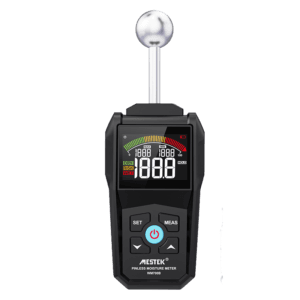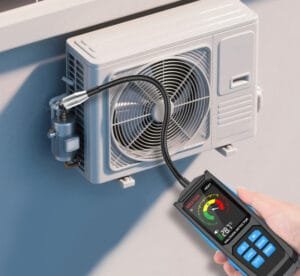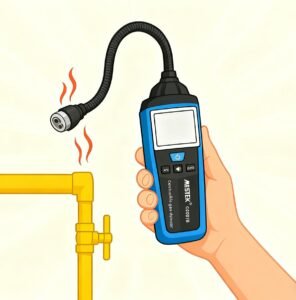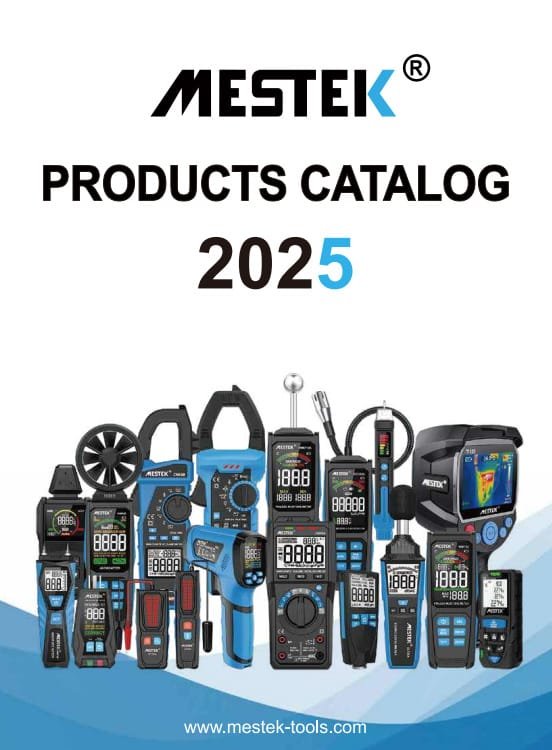When working with concrete in construction, flooring, or restoration, understanding the moisture content is crucial. Excess moisture can lead to a variety of issues: from flooring failure to long-term structural damage. To ensure concrete is ready for the next phase, professionals turn to a concrete moisture meter. But not all meters are created equal—pinless concrete moisture meters stand out as the preferred choice for most applications.
How important is concrete moisture content?
Concrete is extremely porous and will retain moisture long after it cures, so even if it appears dry on the surface, it may contain excess moisture deep down. Installing flooring, sealants or insulation too early can trap moisture and cause bubbling, cracking or mold growth.
That’s why picking the right concrete moisture meter matters — it can make a big difference in whether your project turns out as expected.
Pinless VS Pin-Type Concrete Moisture Meters
There are two main types of concrete moisture meters:
- Pin-type meters use electrodes to measure electrical resistance between two points.
- Pinless meters use electromagnetic signals to detect moisture without penetrating the surface.
Why Pinless Is Better for Concrete

1.Non-Destructive Testing
Concrete surfaces, especially polished or finished slabs, can be damaged by pin-type probes. Pinless meters, on the other hand, scan without leaving a mark.
2.Larger Area Coverage
A pinless concrete moisture meter can scan a broad surface area quickly, offering better insights into moisture distribution.
3.Depth Readings
Many pinless models scan up to 1 inch deep—sufficient to evaluate surface and sub-surface moisture in most concrete slabs.
4.No Surface Prep Needed
Unlike pin meters, which often require smooth and clean surfaces for accuracy, pinless meters are more forgiving, saving time and labor.
5.Repeatability and Consistency
Because there’s no probe insertion, pinless meters reduce variability, ensuring consistent readings across different spots.
How a Concrete Moisture Meter Works
A concrete moisture meter detects moisture by measuring changes in the dielectric constant of the concrete. Moisture alters how electromagnetic waves behave in the material. These shifts are then converted into a moisture reading, usually displayed in percentage or relative scale.
Pinless models typically operate at low frequencies, allowing for deep scanning without interference from surface materials like paint or sealers.
When and Where to Use a Concrete Moisture Meter

1. Before Flooring Installation
Vinyl, hardwood, and laminate floors require a dry, stable base. Use a concrete moisture meter to ensure safe moisture levels before laying any flooring.
2. During Construction Projects
Builders and contractors rely on moisture meters to verify drying times, reduce mold risk, and comply with building codes.
3. For Restoration Work
After water damage or flooding, a concrete moisture meter can help determine how deeply moisture has penetrated and when it’s safe to proceed with repairs.
Key Features to Look For in a Pinless Concrete Moisture Meter
✓ Depth Range
Choose a model with adjustable depth settings or at least a standard 1-inch scanning depth for accurate concrete analysis.
✓ Calibration Options
A reliable concrete moisture meter should allow calibration adjustments to match concrete density and temperature.
✓ Large, Backlit Display
Visibility matters, especially on job sites. Choose a device with a readable display for low-light environments.
✓ Data Logging
Some advanced meters offer data storage and export functions—helpful for documenting and sharing results with clients or inspectors.
✓ Durability
Construction environments are tough. Look for rugged casings and IP-rated resistance to dust and moisture.
How to Use a Pinless Concrete Moisture Meter?
Clean the Surface: Remove dust, debris, or loose particles.
Place the Meter Flat: Ensure full contact between the sensor and concrete.
Scan Multiple Areas: Move across the slab to check for moisture variability.
Take Notes: Record the highest readings and areas of concern.
Follow Manufacturer Guidelines: Each concrete moisture meter has calibration and interpretation nuances.
Understanding Acceptable Moisture Levels

While each flooring manufacturer may provide specific guidelines, here are general moisture thresholds:
≤ 4%: (Moisture Content): Ideal for most flooring types
4–6%: Caution; additional drying may be required
> 6%: Too wet for flooring installation
Always consult your flooring adhesive or material specs to align with their tolerances.
Avoiding Common Mistakes
Do not rely solely on visual inspection,dry surfaces can still trap moisture underneath.
Don’t use wood-calibrated meters for concrete.
Avoid pin meters that can corrode or give false readings on high-density slabs.
Don’t skip multiple readings,moisture distribution is rarely uniform.
Wrapping Up
If you work in flooring, restoration, or construction, checking concrete moisture isn’t just a good idea — it’s critical to prevent issues down the line.**Pinless moisture meters are the preferred choice** for concrete because they’re fast, easy to use, and won’t damage the surface.When you use a dependable moisture meter, you’re not just avoiding future issues — you’re showing your clients they can count on your work for the long haul.
Stay ahead of the curve—explore Mestek Instruments for dependable concrete moisture meter solutions designed for professionals.






